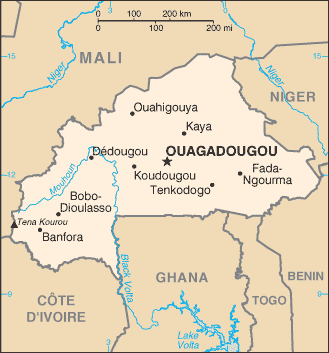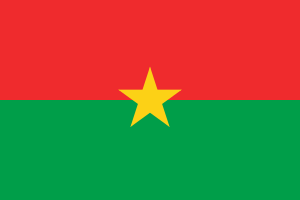Burkina Faso

Burkina Faso is one of those countries you don’t hear much in the media, even though there are reasons why it should be.
Once the home of a lot of Mossi kingdoms, it came to be a French colony during the Scramble for Africa. For a while before and during World War II, it was divided between its French colonial neighbors, but was reconstituted after the war. It achieved independence in 1960, as Upper Volta (Haute-Volta in French), as a reference to the Volta River. It was renamed as Burkina Faso in 1984, which means “land of the honest people”.
Like most of the near countries, Burkina Faso’s history was dominated by autoritative governments and coups, at least until 1987, when the government of Thomas Sankara was toppled by his once-friend Blaise Compaoré, who undid most of the changes of his predecessor (for better or worse). He still stands as President until today in a country filled with poverty and other problems (the country is considered the third least developed in the world). Sadly, it is apparent that the leaders never understood completely the meaning behind their country’s name.
In 2011, the death of a student triggered massive protests in the country and the munity of parts of the army and the National Guard. The protests are still ongoing, so it’s still too soon to make an educated guess about what’s going to happen.
Religiously, there seems to be an equilibrium between Christianity and Islam, although Islam seems to be midly more popular. However, the animistic religions are way more popular than both of them together, especially since they tend to blend their religion of choice with the local religions. In fact, a popular motto in the country seems to be “50% are Muslim, 50% are Christian and 100% are animist”.
Even though the country is not widely known outside Africa, in the continent is well known because of its film industry, producing lots of well-known pictures in the continent, like Yaaba and Tilaï, of the director Idrissa Ouedraogo, or Buud Yam, one of the most famous pictures of Africa. It’s also home of the Panafrican Film and Television Festival of Ouagadougou (FESPACO), the largest African film festival, held in the capital of the country.
The Burkinabe flag
